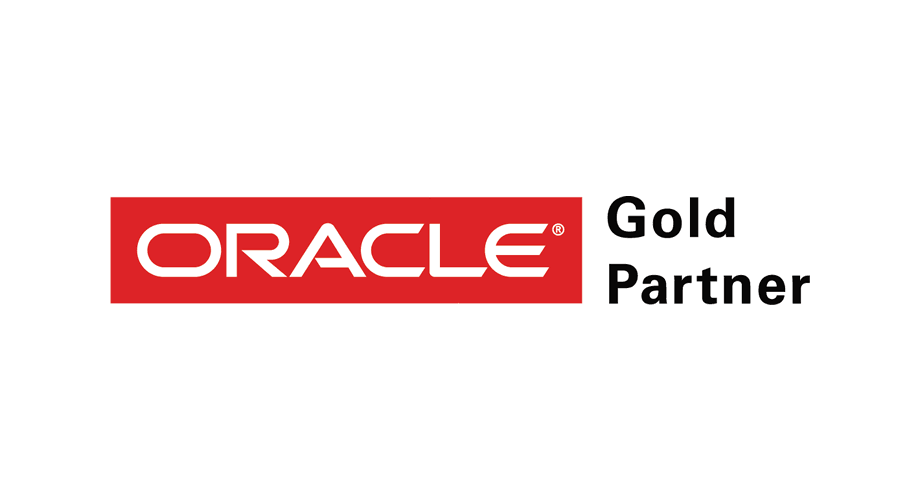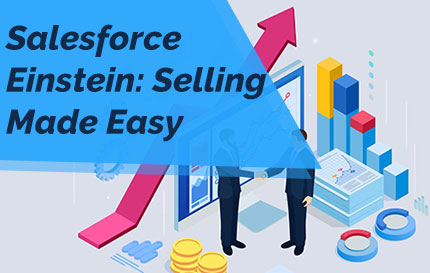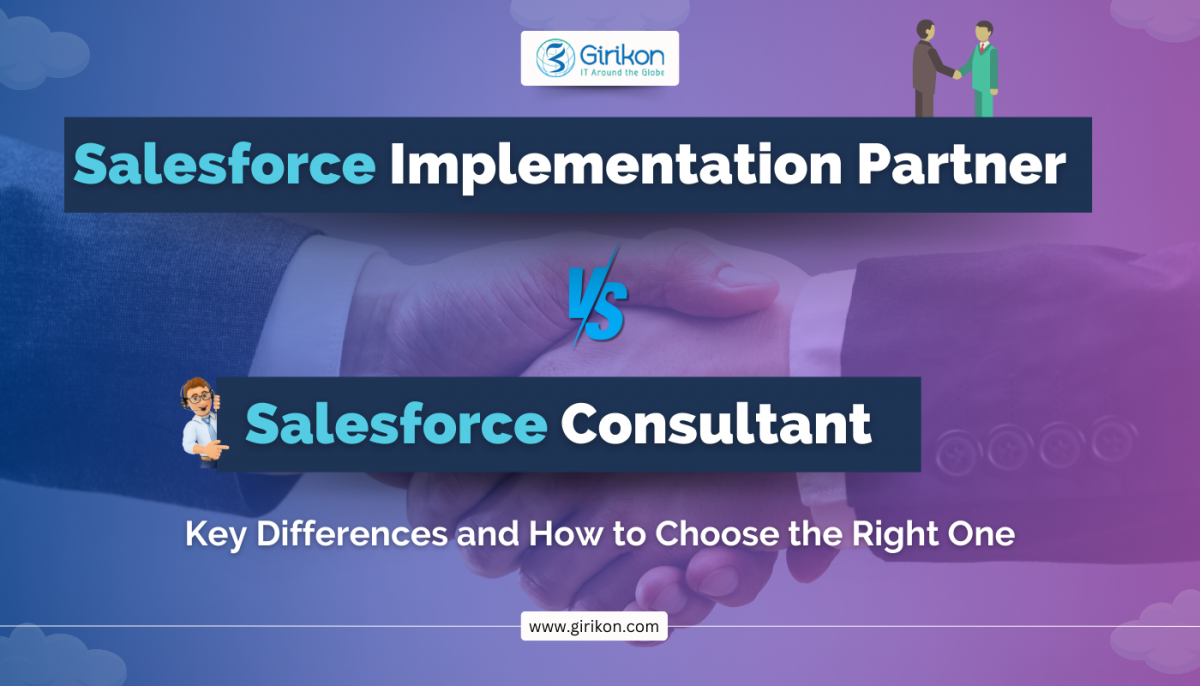All through these years, Salesforce users have been leveraging out-of-the-box operational reports, and dashboards to monitor their data, comprehend performance and share results. However, with customer data growing exponentially with every passing day, exploring data manually has become a huge challenge. To address this challenge, Salesforce has come up with its AI (Artificial intelligence) powered advanced analytics solution i.e. Salesforce Einstein Analytics.
Einstein Analytics is a next-generation business intelligence software designed to provide answers to complex issues at lightning speed. It’s intuitive, empowering, and built for mobile. It leads to decisions, discussions, and transactions that are driven by insight, instead of instinct. Einstein Analytics can help you to provide analytics experiences in sales, service, marketing, and IT business so that the users can take action quickly without getting bogged down by complex dashboards.
Einstein Analytics helps to explore the large data sets quickly and easily by providing AI-powered advanced analytics, right within Salesforce. It helps Manage datasets, query data with SAQL (Salesforce Analytics Query Language), and customize dashboards, all programmatically.
Einstein Analytics allows you to:
Connect to your CRM directly and execute on insights directly in Chatter.
Analyze millions of rows of data automatically & get predictive analytics with Einstein Discovery.
Explore data & automates action with prebuilt apps.
Has similar functionalities on mobile, be it Android or iOS.
Einstein Analytics vs Reports & Dashboards
Reports and Dashboards look and behave like Einstein Analytics, but provide very different functionality. It provides an instant snapshot of the metrics that matter to your business, including team performance, lead volume, and conversion rates.
Einstein Analytics is your Data Scientist. It extends beyond Reports and Dashboards to give you all insights into your pipeline, end-to-end customer insight, and historical analytics to help you plan your next best step.
How Can we use Einstein Analytics in Salesforce?
If you are using any Salesforce product like Sales Cloud, Service Cloud, you still need to purchase licenses for Einstein Analytics. There are 2 types of Einstein Analytics license: Einstein Analytics Growth and Einstein Analytics Plus.
Users’ permissions are defined on their Salesforce user record, granted via a Salesforce permission set. You can access Einstein Analytics via the Analytics tab or the Analytics Studio app (from the App Launcher).
All through these years, Salesforce users have been leveraging out-of-the-box operational reports, and dashboards to monitor their data, comprehend performance and share results. However, with customer data growing exponentially with every passing day, exploring data manually has become a huge challenge. To address this challenge, Salesforce has come up with its AI (Artificial intelligence) powered advanced analytics solution i.e. Salesforce Einstein Analytics.
Einstein Analytics is a next-generation business intelligence software designed to provide answers to complex issues at lightning speed. It’s intuitive, empowering, and built for mobile. It leads to decisions, discussions, and transactions that are driven by insight, instead of instinct. Einstein Analytics can help you to provide analytics experiences in sales, service, marketing, and IT business so that the users can take action quickly without getting bogged down by complex dashboards.
Einstein Analytics helps to explore the large data sets quickly and easily by providing AI-powered advanced analytics, right within Salesforce. It helps Manage datasets, query data with SAQL (Salesforce Analytics Query Language), and customize dashboards, all programmatically.
Einstein Analytics allows you to:
Connect to your CRM directly and execute on insights directly in Chatter.
Analyze millions of rows of data automatically & get predictive analytics with Einstein Discovery.
Explore data & automates action with prebuilt apps.
Has similar functionalities on mobile, be it Android or iOS.
Einstein Analytics vs Reports & Dashboards
Reports and Dashboards look and behave like Einstein Analytics, but provide very different functionality. It provides an instant snapshot of the metrics that matter to your business, including team performance, lead volume, and conversion rates.
Einstein Analytics is your Data Scientist. It extends beyond Reports and Dashboards to give you all insights into your pipeline, end-to-end customer insight, and historical analytics to help you plan your next best step.
How Can we use Einstein Analytics in Salesforce?
If you are using any Salesforce product like Sales Cloud, Service Cloud, you still need to purchase licenses for Einstein Analytics. There are 2 types of Einstein Analytics license: Einstein Analytics Growth and Einstein Analytics Plus.
Users’ permissions are defined on their Salesforce user record, granted via a Salesforce permission set. You can access Einstein Analytics via the Analytics tab or the Analytics Studio app (from the App Launcher).
All through these years, Salesforce users have been leveraging out-of-the-box operational reports, and dashboards to monitor their data, comprehend performance and share results. However, with customer data growing exponentially with every passing day, exploring data manually has become a huge challenge. To address this challenge, Salesforce has come up with its AI (Artificial intelligence) powered advanced analytics solution i.e. Salesforce Einstein Analytics.
Einstein Analytics is a next-generation business intelligence software designed to provide answers to complex issues at lightning speed. It’s intuitive, empowering, and built for mobile. It leads to decisions, discussions, and transactions that are driven by insight, instead of instinct. Einstein Analytics can help you to provide analytics experiences in sales, service, marketing, and IT business so that the users can take action quickly without getting bogged down by complex dashboards.
Einstein Analytics helps to explore the large data sets quickly and easily by providing AI-powered advanced analytics, right within Salesforce. It helps Manage datasets, query data with SAQL (Salesforce Analytics Query Language), and customize dashboards, all programmatically.
Einstein Analytics allows you to:
Connect to your CRM directly and execute on insights directly in Chatter.
Analyze millions of rows of data automatically & get predictive analytics with Einstein Discovery.
Explore data & automates action with prebuilt apps.
Has similar functionalities on mobile, be it Android or iOS.
Einstein Analytics vs Reports & Dashboards
Reports and Dashboards look and behave like Einstein Analytics, but provide very different functionality. It provides an instant snapshot of the metrics that matter to your business, including team performance, lead volume, and conversion rates.
Einstein Analytics is your Data Scientist. It extends beyond Reports and Dashboards to give you all insights into your pipeline, end-to-end customer insight, and historical analytics to help you plan your next best step.
How Can we use Einstein Analytics in Salesforce?
If you are using any Salesforce product like Sales Cloud, Service Cloud, you still need to purchase licenses for Einstein Analytics. There are 2 types of Einstein Analytics license: Einstein Analytics Growth and Einstein Analytics Plus.
Users’ permissions are defined on their Salesforce user record, granted via a Salesforce permission set. You can access Einstein Analytics via the Analytics tab or the Analytics Studio app (from the App Launcher).
Conclusion
Salesforce Einstein Analytics gives the power to harness raw data for real business solutions that make a huge difference. Salesforce customers report tells that Einstein Analytics has boosted their individual and team productivity levels, saving them an average of 10-11 hours per month per IT/sales/operations resource. And the longer they use Einstein Analytics, the more productivity continues to increase.
If you wish to implement Einstein Analytics and avail the above-mentioned exciting benefits, you can consider partnering with a Salesforce implementation partner.
About Girikon
Girikon is a reputed IT consulting company with offices across the USA, UK, Australia, and India. Over the years the company has become one of the established players in the area of Salesforce consulting, Salesforce implementation and Salesforce support space.

 +1-480-382-1320
+1-480-382-1320 +61-1300-332-888
+61-1300-332-888 +91 9811400594
+91 9811400594











